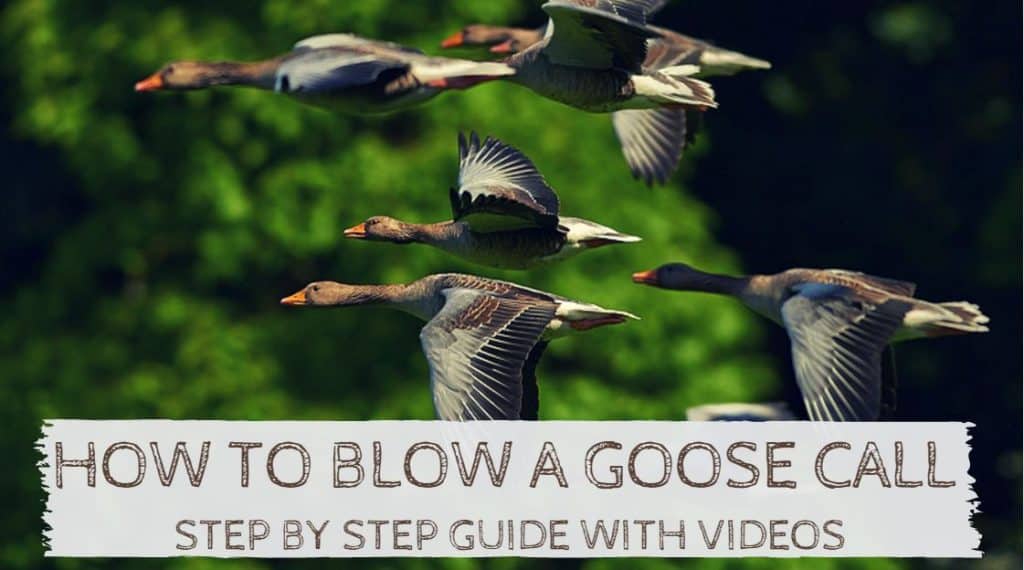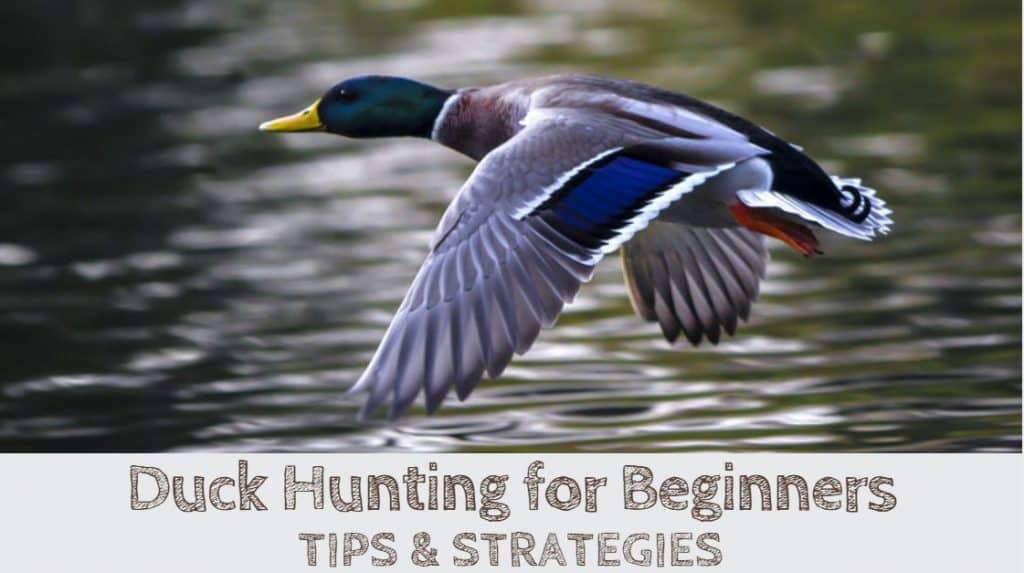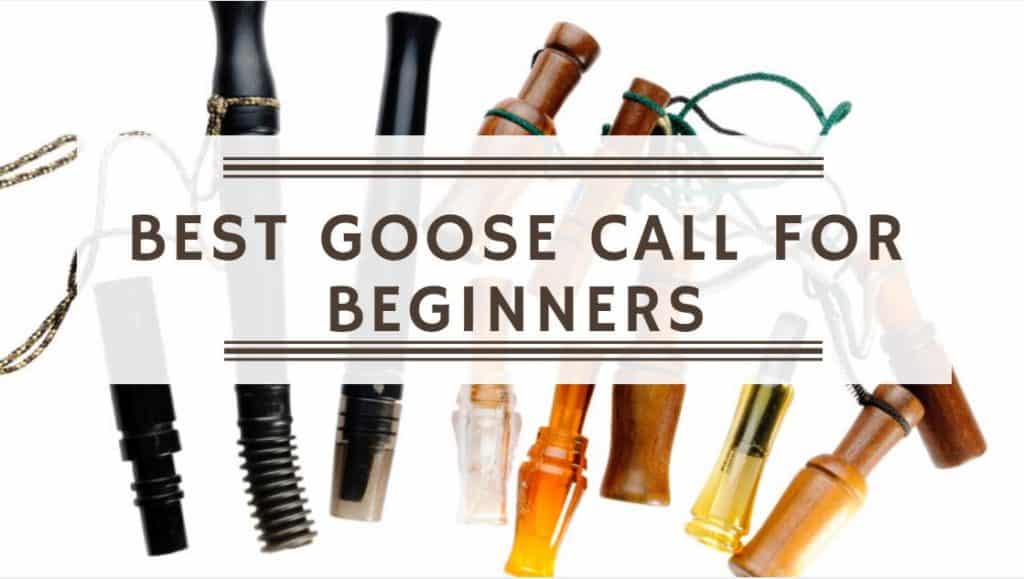How to Blow a Goose Call: To be successful in goose hunting, you must be able to properly bring together different individual parts, like camo, and decoys, to attract the geese. If you are able to blend proper calling with decoys and camo, then it would significantly improve your efficiency of hunting.
But, the problem for most novice hunters is how to blow a goose call or how to learn the art of calling?
So, in this article, we will provide a step-by-step guide and videos on How to Blow a Goose Call.
As a novice hunter, you should be aware that one of the foremost “don’t” of goose calling is excessive calling.
So many novice hunters call excessively and then wonder why the geese are not attracted.
It’s simple: If you compare geese to other fowl like the duck then geese are pretty quiet.
Geese don’t just simply sit on the ground and call, especially while feeding. Geese generally call when they observe other geese flying in their direction.
Geese call to indicate safety and invite such goose formations flying towards them to join in.
What You Need to Get Started
1. Short Reed Goose Call
The short reed is one of the Best Goose Calls for Beginners. It is very easy to use and it is the first thing you’ll need. There are many other types of calls out there, but, the short reed is the most common among waterfowl hunters.
Apart from the short reed, goose flute calls are also popular as they create quality sounds. But they have a comparatively sharper learning curve.
2. Space to Practice
Making goose calls can be very annoying. So it is better to go to a secluded place for practice to avoid irritating your neighbors.
Make sure that wherever you are, you‘re feeling comfortable.
3. Most Important
Lastly, to learn how to blow a goose call, you are going to need 3 important things. Don’t worry, you aren’t going to eBay. You are going to need your lips, tongue, and throat.
Now that you have all that’s needed, let’s get started, just remember that Rome wasn’t built in a day.
It takes time and practice to learn how to blow goose calls.
This tutorial is a pacesetter, it is meant to wet the ground for you.
How to Blow a Goose Call
Here are our step-by-step instructions to help you learn.
Step 1: Properly Hold the Call
Just like all wind instruments — the goose call works well with a reasonable amount of pressure.
So, before blowing the goose call, fold both hands on the base of the call.
Both hands are needed as the sound varies with pressure and blowing the call with both hands brings a more natural sound.
Tips: Place your hands on the base of the call, like you want to fold it.
Step 2: Place the call to your Mouth
The first thing to note in goose calling is mouth placement.
This is the area, where most beginners get it wrong.
Mouth placement is a very important factor, for it will assist in proper air control.
Tips: Place the call on your lips like you are about to drink a bottle of soda.
Step 3: Understanding Geese Sounds
Here we are, the sounds are what get the geese coming and it is an aspect that can’t be forsaken.
It is not just about holding the call and making random sounds, there are basic sound strategies in goose hunting that need to be followed.
The Cluck. The cluck is a single note, fast, choppy version of a honk used to guide the flock into your decoy spread. To make the cluck you say “Gwit, Gwit, Gwit” at a fast and steady pace. Continue clucking at the same speed and decreasing the volume as the geese fly closer.
The Double Cluck. The double cluck is made by changing hand positions for each note. Your hands remain open for one cluck and closed for the next cluck.
The Comeback Call. The comeback call is a three-note call used to draw the geese back if they drift away from your decoy spread. To make the comeback call you say “To-it-ha” holding the note for a second. Repeat the call until the flock turns back toward your position.
The Lay Down Call. The lay-down call is a series of single-note growls used to convince the geese to land. To make the lay-down call you say “Grrr-Grrr-Grrr” in a low, deep voice. Continue repeating this call when the geese are on their final approach. To make the lay-down call even more effective, you can mix in a few short, soft clucks.
5 Goose Calling Tips and Tricks
Here are some tips and tricks to help you get around while goose hunting.
1. Keep Your Calls Simple
It doesn’t matter whether you are a professional-class hunter or a novice – keeping calls simple often provides the best results.
You would be able to call in geese in any of the states if you have practiced the basics like clucking and moaning, fast and slow well.
If you are able to produce a ‘goosey’ rhythm, then you will be able to call in the smartest of the geese as well.
2. Carry More Than One Call
If you are a novice hunter, then you should carry two different types of calls.
We recommend that you carry an acrylic short-reed call and a wooden short-reed call.
The acrylic short-reed call produces sharp, loud, and high-pitched sounds for windy days in the field.
On the other hand, the wooden short-reed call produces deeper, softer, and more realistic sounds.
Once you have more experience, you may even be able to use one of the Best Duck Calls for Beginners to call geese. But it will never be as effective as a dedicated goose call.
So we suggest beginners stick to calls specifically designed for calling geese. You are more likely to draw them in using a goose call instead of a duck call.
3. Use Floater Decoys
If you are hunting a sandbar or some other water set, then you should resist using large numbers of full-body decoys.
Movement is quite important when it comes to decoy spreads, and full-body decoys don’t generally provide adequate motion.
Instead, you should keep the full-body decoys to a minimum and prefer more floating decoys, especially if there is a good current.
4. Spread Your Decoys
One common mistake which I have seen many novice hunters make is to stack decoys close.
This would cause the geese to just hover over and not land as there isn’t enough space.
Even the smaller geese have a four-foot wingspan and prefer to land with ease.
So basically you need to provide enough space between decoys to allow the birds to land.
5. Stay Still, and Don’t Gawk
While you are trying to attract geese, it is important for everyone in your blind to be disciplined and stay perfectly still.
We often see novice hunters trying to look up at geese while calling. But, there is a rule in goose hunting that if you can see them (the geese), then they can also see you (maybe even better).
So it is important that you stay still, do not move, and camouflage yourself well.
Camouflage
Talking about camouflage, here is a quick guide to different types of camouflage and how to select the camo for your next goose hunting trip.
If you have been on any hunting trip before or watched any hunting videos, then camouflaging should not be a problem. Basically, you don’t let the geese see you. Here are some popular types of camouflage used by hunters:
Woodland. This is the popular choice for deer and big game hunters, as this camouflage is designed to blend with wooded areas. Hunters generally prefer patterns with greens and leaves earlier in the season, and browns and bare branches while hunting in late fall or early spring.
Brush. If you’re hunting in wide-open areas, then a brush camo is the better choice. Brush camo allows you to blend in with dirt and dead grasses seen in open spaces.
Marsh/ Waterfowl. This camouflage is essential for goose and duck hunters. Waterfowl camouflages feature a mix of tall grasses, corn stalks, reeds, and other elements that you’re likely to find in a swamp area.
Conclusion
I hope this article has helped you get started on your journey to learn how to blow a goose call.
Although it is easy to learn how to blow a goose call, it takes a bit of time and practice to master the art.
Last Updated on May 15, 2025 by Victor Mays




